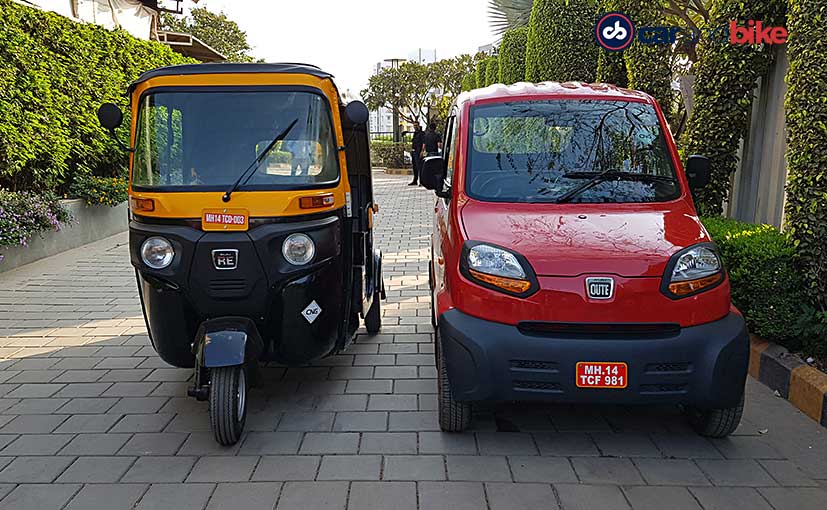Bajaj Auto is currently speaking to several RTOs (Regional Transport Office) in India to finalise the fare structure for quadricycles that w...
Bajaj Auto is currently speaking to several RTOs (Regional Transport Office) in India to finalise the fare structure for quadricycles that will have commercial applications. The Pune-based automaker recently launched the Bajaj Qute, the country's first-ever quadricycle, in Maharashtra, for both personal and commercial usage. Considering the fact that the company aims to position the new quadricycle as an alternative for auto rickshaws or even smaller taxis for Intracity commute, it's keen on zeroing in on a well-defined fare structure.
Also Read: Bajaj Qute LPG Variant To Be Launched By End Of May 2019
Speaking on the matter, Navneet Sahni, General Manager, Intracity Business Unit, Bajaj Auto said, "It's a state subject, currently the fare structure for auto is around Rs. 12 per km and for four-wheeler taxis it's about Rs. 16 per km. So, we are in discussion to have an in-between fare structure for quadricycle."

The Bajaj Qute is being launched in a phased manner and Maharashtra is the 6th state to get it so far
In addition to this, the company is also planning to tie-up with cab aggregators, like Ola and Uber, among other small players, to add the Bajaj Qute to their fleet as a separate category. The company says that while the aim is to roll out the Qute on these platforms on Pan India basis, initially Bajaj plans to do a pilot run and then focus on multiple regions.
Also Read: 2019 Bajaj Qute First Drive Review

A quadricycle falls between a three-wheeler and an entry-level small car, and has small proportions
The quadricycle segment is right now very new to the Indian market and there are several aspects that need to be ironed out before Bajaj can think about multiple applications for the vehicle. The company says that it will be taking one step at a time with the Qute, and at the moment, Bajaj is just focused on pan India launch for the quadricycle, which is expected to happen by the end of April 2019. This will be followed by the launch of the LPG variant of the Bajaj Qute in May 2019.
Currently, the Bajaj Qute is offered in two fuel options - petrol and CNG, available in mono-fuel versions, meaning, you can either get it in petrol form or CNG, not both. Engine, however, is the same rear-mounted 216 cc, single-cylinder, twin-spark engine, which makes 13 bhp and 18.9 Nm torque in the petrol version and 10 bhp and 16 Nm torque in the CNG model. Both come mated to a 5-speed sequential gearbox, and the top speed is limited to 70 kmph.
from NDTV CarAndBike - Latest News http://bit.ly/2ZniAWz






COMMENTS